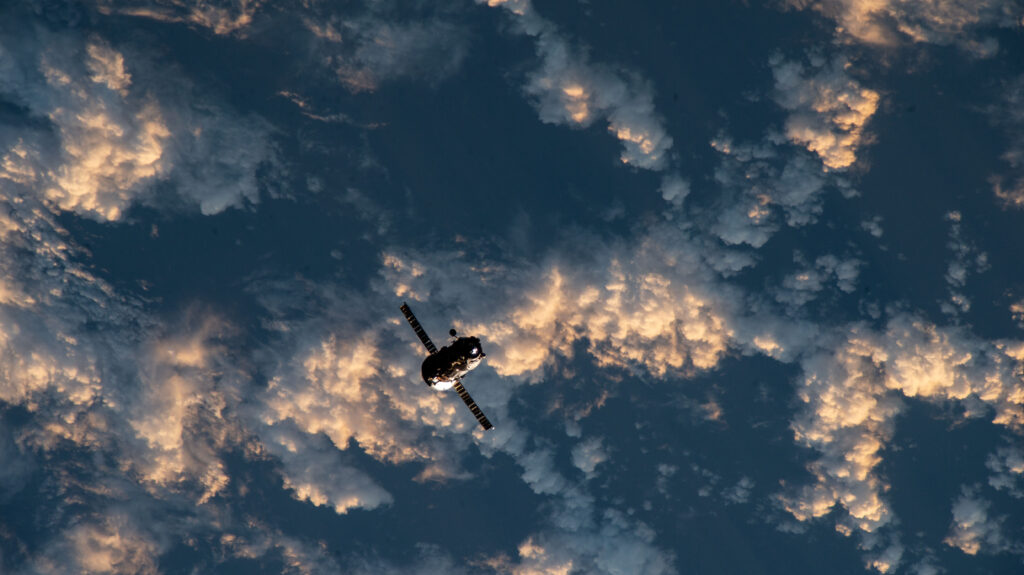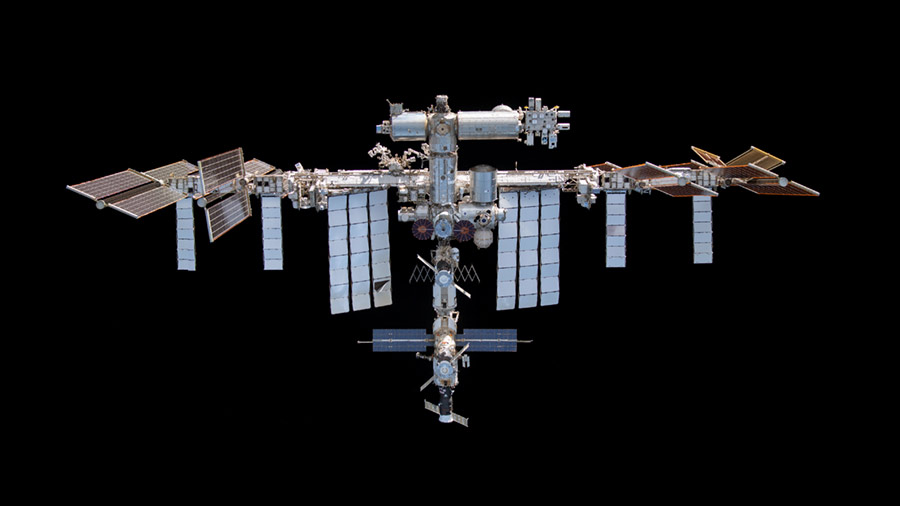
The Expedition 70 crew is counting down to the arrival of new cargo as Progress nears its launch on Wednesday. Aboard the International Space Station, scientific hardware replacements and cargo audits topped the schedule for the seven orbital residents.
The Progress 87 cargo craft is scheduled to launch from the Baikonur Cosmodrome in Kazakhstan at 10:25 p.m. EST on Wednesday, Feb. 14. Loaded with nearly three tons of food, fuel, and supplies, Progress will dock to the station around 1:12 a.m. Saturday, Feb. 17, where it will remain for approximately six months.
In the Kibo Laboratory, Flight Engineer Satoshi Furukawa of JAXA (Japan Aerospace Exploration Agency) spent the day working on the Electrostatic Levitation Furnace (ELF). ELF allows safe thermophysical research in microgravity, providing scientists and engineers the opportunity to observe what happens to materials exposed to high temperatures in the space environment. With assistance from Flight Engineer Loral O’Hara of NASA, Furukawa retrieved ELF, then replaced sensor controllers on the device before reinstalling it.
O’Hara completed some orbital plumbing tasks in the morning, and after assisting Furukawa, she swapped the sleeves in the Life Sciences Glovebox, which is a sealed work area astronauts use to conduct various life sciences and technology investigations.
In the Destiny module, Commander Andreas Mogensen of ESA (European Space Agency) installed new sample cartridges in the Materials Science Laboratory, a payload used for materials research in microgravity. Afterward, Mogensen collected water samples from the station’s Potable Water Dispenser, before completing a VR for Exercise and VR Mental Care session.
As part of ongoing science, crew members study burning in microgravity to determine how material flammability is affected by fuel temperatures through an experiment called SoFIE-GEL. In the morning, Flight Engineer Jasmin Moghbeli of NASA replaced experiment samples for the investigation. She then moved on to cargo ops, unloading supplies and science that were delivered aboard Northrop Grumman’s 20th commercial resupply mission.
In the Roscosmos segment, the trio of cosmonauts—Oleg Kononenko, Nikolai Chub, and Konstantin Borisov—kept busy with inventory and cargo audits throughout the day. Borisov also ran a Pilot-T session, an ongoing experiment that allows crew members to practice piloting techniques.
Learn more about station activities by following the space station blog, @space_station and @ISS_Research on X, as well as the ISS Facebook and ISS Instagram accounts.
Get weekly video highlights at: https://roundupreads.jsc.nasa.gov/videoupdate/
Get the latest from NASA delivered every week. Subscribe here: www.nasa.gov/subscribe









